Analysis of Gas-Turbine Type GT-009 M Low-Toxic Combustion Chamber with Impact Cooling of the Burner Pipe Based on Combustion of Preliminarily Prepared Depleted Air–Fuel Mixture
Abstract
:1. Introduction
- Perform an analysis of the advantages and disadvantages of the method of combustion of a preliminarily prepared depleted air–fuel mixture, as well as a review of the combustion chamber designs in which this method is implemented.
- Analyze the design features of the combustion chambers of the gas turbine unit of GT-009 M type with impact cooling of the flame tube.
- Analyze the results of the overall thermal and structural calculations of the combustion chamber at different loads (fuel—gas).
- Perform a feasibility study on the creation and implementation of a combustion chamber with impact cooling and with combustion of preliminarily prepared depleted air–fuel mixture.
2. Materials and Methods
2.1. Analysis of the Method of Combustion of Preliminarily Prepared Depleted Air–Fuel Mixture
- Increasing the velocities at the outlet of the premixing chamber to prevent flame skipping.
- Application of fuel or air flow control systems entering the primary zone to expand the control range by the excess air ratio.
- Use of a standby diffusion burner or a diffusion stabilization source.
2.2. Analysis of Combustion Chamber Designs Implementing the Method of Combustion of Preliminarily Prepared Depleted Air–Fuel Mixture
2.3. Analysis of the Main Disadvantages of the Method of Combustion of Preliminarily Prepared Depleted Air–Fuel Mixture
2.4. Analysis of the Design Features of the Combustion Chamber of Gas-Turbine Unit Type GT-009 M with Impact Cooling of the Burner Pipe
3. Results
3.1. Analysis of the Results of the General Thermal Calculation of the Combustion Chamber
- Air flow rate for the combustion chamber—GA, kg/s.
- Air pressure before the combustion chamber—pA, MPa.
- Air temperature—TA, K.
- Average temperature of combustion products behind the combustion chamber—T, K.
- Type of fuel, its elementary composition.
- Fuel temperature—TF, K.
- Combustion efficiency factor (adopted)—ηC.
- Steam or air temperature at fuel atomization—TS, K.
- Relative flow rate of steam or air for fuel atomization—gS, kg/kg.
- Oxygen content O2A = 23.2, %.
- Net calorific value of fuel LHV = 50.0, MJ/kg.
- Normal density of combustion products behind the combustion chamber = 1.30, kg/m3.
- Average mass heat capacity of gases at α = 1, CpG decreases from 1.25, kJ/(kg·K) at 100, % load to 1.18, kJ/(kg·K) at 0, % load (refer to Figure 2).
- Excess air ratio behind the combustion chamber α increases from 5.31 at 100% load to 12.7 at 0% load (refer to Figure 3).
- Combustion products density behind the combustion chamber increases from 1.97 kg/m3 at 100% load to 2.48 kg/m3 at 0% load (refer to Figure 4).
- Air density at the combustion chamber inlet increases from 3.13 kg/m3 at 100% load to 3.51 kg/m3 at 0% load (refer to Figure 5).
- Total amount of gases at αs increases from 91.8 kg/kg at 100% load to 218 kg/kg at 0% load (refer to Figure 6).
- Mass fraction of triatomic gases rRO2 decreases from 0.0294 at 100% load to 0.0123 at 0% load (refer to Figure 7).
- Mass fraction of water vapor rH2O decreases from 0.0267 at 100% load to 0.0112 at 0% load (refer to Figure 8).
3.2. Analysis of the Results of Structural Calculation of the Combustion Chamber
- Flame tube area FFT = 0.0397, m2.
- Relative length of the flame tube LR = 2.4.
- Area of registers at the outlet for one combustion chamber FR = 0.0126, m2.
- Area of afterburning holes for one combustion chamber FA = 0.00224, m2.
- Primary air path area for one combustion chamber FP = 0.0148, m2.
- Area of one cooling band for one combustion chamber FC = 0.0127, m2.
- Ring channel area for one combustion chamber FRC = 0.0147, m2.
- Mixer area for one combustion chamber FM = 0.01, m2.
- Air flow rate in the circular duct GCD = 24.1, kg/s.
- Total throughput area by the tracts of one combustion chamber FT increases from 0.0250 m2 at 100% load to 0.0376 m2 at 0% load (refer to Figure 9).
- Forcing the combustion chamber UF decreases from 115.0 W/(m2·Pa) at 100% load to 65.0 W/(m2·Pa) at 0% load (refer to Figure 10).
- Average air velocity along the tracts ωA decreases from 70.1 m/s at 100% load to 42.7 m/s at 0% load (refer to Figure 11).
- Primary air flow rate for all combustion chambers GP decreases from 26.0 kg/s at 100% load to 17.7 kg/s at 0% load (refer to Figure 12).
- Air flow rate to registers for all combustion chambers GR decreases from 22.0 kg/s at 100% load to 15.1 kg/s at 0% load (refer to Figure 13).
- Afterburning air consumption for all combustion chambers GAFT decreases from 3.93 kg/s at 100% load to 2.68 kg/s at 0% load (refer to Figure 14).
- Mixing air flow rate for all combustion chambers GM decreases from 17.6 kg/s at 100% load to 12.0 kg/s at 0% load (refer to Figure 15).
- Air velocity in the circular duct ωCD decreases from 65.4 kg/s at 100% load to 58.1 kg/s at 0% load (refer to Figure 16).
- Gas flow in the combustion zone GG decreases from 26.5 kg/s at 100% load to 18.0 kg/s at 0% load (refer to Figure 17).
- Surplus primary air α1 increases from 2.67 at 100% load to 4.25 at 0% load (refer to Figure 18).
- Surplus secondary air α2 increases from 3.14 at 100% load to 5.01 at 0% load (refer to Figure 19).
- Oxygen content in combustion products O2 increases from 18.3% at 100% load to 21.0% at 0% load (refer to Figure 20).
4. Discussion
Author Contributions
Funding
Institutional Review Board Statement
Informed Consent Statement
Data Availability Statement
Conflicts of Interest
References
- Lefebvre, A.; Ballal, D. Gas Turbine Combustion Alternative Fuels and Emissions, 3rd ed.; CRC Press: Boca Raton, FL, USA, 2010; p. 558. [Google Scholar]
- Smirnov, A. Snizhenie Vrednyh Vybrosov v Kamerah Sgoraniya Moshchnyh Energeticheskih GTU na baze Raschetnyh i Eksperimental’nyh Issledovanij. Ph.D. Thesis, St. Petersburg Institute VTUZ-LMZ, St. Petersburg, Russia, 2000. [Google Scholar]
- Roslyakov, P.; Kondrat’eva, O. Razrabotka normativnogo dokumenta na proektirovanie i ekspluataciyu sistem nepreryvnogo kontrolya i ucheta vrednyh vybrosov TES. Ind. Power Eng. 2016, 8, 45–52. [Google Scholar]
- Canilo, P.; Podgorny, A.; Christich, V. Energeticheskie i Ekologicheskie Harakteristiki GTD pri Ispol’zovanii Uglevodorodnyh Topliv i Vodoroda; Naukova Dumka: Kiev, Ukraine, 1987; p. 221. [Google Scholar]
- Fenimore, C. Formation of nitric oxide from fuel nitrogen in ethylene flames. Combust. Flame 1972, 19, 289–296. [Google Scholar] [CrossRef]
- Mitrofanov, V.; Rudakov, O.; Sigalov, Y. A methodology for calculating unsteady combustion in a gas-turbine engine. Therm. Eng. 2005, 52, 874–878. [Google Scholar]
- Smirnov, A.; Tolmatchew, V. Sposoby stabilizacii processa goreniya predvaritel’no podgotovlennoj obednennoj toplivovozdushnoj smesi v KS GTU. Mod. Turbine Constr. 2000, 3, 86–90. [Google Scholar]
- Asoskov, V.; Shestakov, N.; Ogonykov, K.; Smirnov, A.; Chebakova, G. Combustion Chamber. Utility Model Patent RU 151885 U1, 20 April 2015. Available online: https://elibrary.ru/download/elibrary_38370290_74920632.pdf (accessed on 28 July 2021).
- Mitrofanov, V. Kameri Sgoraniya Gazoturbinnih Dvigatelei: Matematicheskoe Modelirovanie, Metodologiya Rascheta Koncepciya Optimalnogo Proektirovaniya. Ph.D. Thesis, St. Petersburg Polytechnic University, St. Petersburg, Russia, 2004. [Google Scholar]
- Schennikov, K.; Bogov, I.; Tolmatchew, V. Elektroiskrovye zapal’no-gorelochnye ustrojstva. Mod. Turbine Constr. 2000, 3, 68–85. [Google Scholar]
- Christich, V.; Shevchenko, A.; Ozerov, A.; Savchenko, V. Flame Tube of the Combustion Chamber of a Gas Turbine Engine. Utility Model Patent SU 1719800 A1, 15 March 1992. Available online: https://elibrary.ru/download/elibrary_40695648_16301705.pdf (accessed on 28 July 2021).
- Tolmatchew, V. Modelirovanie i Issledovanie Vihrevogo Zapalno-Stabiliziruyuschego Modulya kamer Sgoraniya Gazoturbinnih Ustanovok. Ph.D. Thesis, St. Petersburg Polytechnic University, St. Petersburg, Russia, 2012. [Google Scholar]
- Kuznetsov, E.; Snegirev, A.; Markus, E. Radiative Extinction of Laminar Diffusion Flame above the Flat Porous Burner in Microgravity: A Computational Study. Combust. Explos. Shock. Waves 2020, 56, 394–411. [Google Scholar] [CrossRef]
- Maspanov, S.; Bogov, I.; Sukhanov, V.; Tolmatchew, V. Ignition of the flame in the combustion chamber of a gas turbine for electric power generation. Energies 2022, in press.
- Mikhajlov, V.; Vertkin, M.; Kruglikov, P.; Smirnov, A.; Homenok, L. Gibridnye ugol’no-gazovye PGU bol’shoj moshchnosti: Osnovnye tekhnicheskie i skhemnye resheniya. Energetik 2013, 12, 7–10. [Google Scholar]
- Mikhajlov, V.; Vertkin, M.; Kruglikov, P.; Smirnov, A.; Homenok, L. Sbrosnye PGU s ugol’nymi paroturbinnymi blokami bol’shoj moshchnosti: Termodinamicheskij aspekt. Energetik 2014, 1, 11–14. [Google Scholar]
- Lemanov, V.; Terekhov, V.; Terekhov, V. Teploobmen v impaktnoj osesimmetrichnoj strue. In Sekciya №1 Turbulentnye Techeniya v Odnofaznyh sredah, Intensifikaciya Teploobmena, Proceedings of the Vserossijskaya konferenciya «XXXV Sibirskij Teplofizicheskij Seminar», Novosibirsk, Russia, 27–29 August 2019; Pahomov, M., Bogatko, T., Eds.; Izd-vo Srochnaya Poligrafiya: Novosibirsk, Russia, 2019; p. 33. [Google Scholar]
- Tumanovskii, A.; Bulysova, L.; Vasil’ev, V.; Gutnik, M.; Gutnik, M. Development of Low-Emission Combustors for Power-Generating GTUs. Therm. Eng. 2021, 68, 473–480. [Google Scholar] [CrossRef]
- Breus, V.; Shestakov, N.; Leikam, A.; Smirnov, A.; Andrienko, V. Organizaciya szhiganiya vodougol’nyh toplivnyh suspenzij v tekhnologicheskoj kamere sgoraniya. Mod. Sci. Res. Ideas Results Technol. 2012, 3, 3–7. [Google Scholar]
- Sergeev, V.; Anikina, I.; Kalmykov, K. Using Heat Pumps to Improve the Efficiency of Combined-Cycle Gas Turbines. Energies 2021, 14, 2685. [Google Scholar] [CrossRef]
- Snegirev, A.; Markus, E.; Kuznetsov, E.; Harris, J.; Wu, T. On soot and radiation modeling in buoyant turbulent diffusion flames. Heat Mass Transf./Waerme-Stoffuebertragung 2018, 54, 2275–2293. [Google Scholar] [CrossRef]
- Bogov, I.; Kulandin, A.; Sukhanov, V.; Tolmatchew, V.; Bezukhov, A.; Smirnov, A.; Bodrov, A.; Korihin, N. Fundamentals of Technical Thermodynamics, Thermochemistry, and Cycle Analysis of Gas-Turbine Plants; IA Energomashinostroenie: St. Petersburg, Russia, 2007; p. 192. [Google Scholar]
- Asoskov, V.; Denezhkin, L.; Smirnov, A.; Tolmatchew, V. Razrabotka konstrukcij malotoksichnyh kamer sgoraniya dlya energeticheskih GTU. In Proceedings of the XLIV Nauchno-Tekhnicheskaya Sessiya po Problemam Gazovyh Turbin, St. Petersburg, Russia, 16–17 September 1997; OAO «VTI» Press: St. Petersburg, Russia, 1997; pp. 43–45. [Google Scholar]
- Arseniev, L.; Tyryshkin, V.; Bogov, I.; Podobuyev, Y.; Levin, Y. Stationary Gas Turbine Units; Mashinostroenie: St. Petersburg, Russia, 1989; p. 543. [Google Scholar]
- Bulysova, L.; Vasil’ev, V.; Gutnik, M.; Pugach, K. Razvitie maloemissionnyh kamer sgoraniya dlya perspektivnyh GTU. In Sekciya №1 Rabochij Process kamer sgoraniya GTD i GTU, Proceedings of the Processy Goreniya, Teploobmena i Ekologii Teplovyh Dvigatelej, Sbornik Tezisov XI Vserossijskoj Nauchno-Tekhnicheskoj Konferencii s Mezhdunarodnym Uchastiem, Samara, Russia, 26–27 September 2019; Lukachyov, S., Ed.; Samara University Press: Samara, Russia, 2019; pp. 7–8. [Google Scholar]
- Maspanov, S.; Bogov, I.; Tolmatchew, V.; Rassokhin, V. Methodology of engineering and design calculation of swirl burner systems of combustion chambers based on VZGM. In Turbines, Hydraulic Machines and Aircraft Engines, Proceedings of the XLIV SPbPU Science Week: Scientific Forum with International Participation. Institute of Energy and Transport Systems, St. Petersburg, Russia, 30 November–5 December 2015; Polytechnic University Press: St. Petersburg, Russia, 2015; pp. 49–51. [Google Scholar]
- Maspanov, S.; Bogov, I.; Sukhanov, V. Experimental research in possibilities of quality improvement of burning processes in burners of turbines. In Sekciya «Energeticheskoe Mashinostroenie», Proceedings of the Scientific Conference with International Participation «Week of Science 2019», St. Petersburg, Russia, 18–23 November 2019; Plotnikov, A., Ed.; Politekh Press: St. Petersburg, Russia, 2019; pp. 289–291. [Google Scholar]
- Xia, C.; Brindhadevi, K.; Elfasakhany, A.; Alsehli, M.; Tola, S. Numerical modelling of the premixed compression ignition engine for superior combustion and emission characteristics. Fuel 2021, 306, 121540. [Google Scholar] [CrossRef]
- Bulysova, L.; Vasil’ev, V.; Berne, A.; Gutnik, M. Experience gained from construction of low-emission combustion chambers for on-land large-capacity gas-turbine units: GT24/26. Therm. Eng. 2018, 65, 362–370. [Google Scholar] [CrossRef]
- Bulysova, L.; Gutnik, M.; Pugach, K. Snizhenie emissii NOx putem organizacii posledovatel’nogo dvuhstupenchatogo szhiganiya topliva. Gazoturbinnye Tekhnologii 2020, 2, 24–27. [Google Scholar]
- Maspanov, S.; Bogov, I.; Tolmatchew, V.; Sukhanov, V. Stand for Studying the Effect of Ozone on the Processes in the Combustion Chamber of a Gas Turbine Unit. Utility Model Patent RU 175593 U1, 10 March 2017. Available online: https://elibrary.ru/download/elibrary_38300204_54509408.pdf (accessed on 28 July 2021).
- Tsybizov, Y.; Tyulkin, D.; Vorotyntsev, I. Technology of low-emission fuel combustion and conceptual structure of the combustion chamber of a gas-turbine power plant. Vestn. Samara Univ. Aerosp. Mech. Eng. 2020, 19, 107–120. [Google Scholar] [CrossRef]
- Maspanov, S.; Bogov, I.; Sukhanov, V. Oxidizer ozonation as a method of fuel combustion intensification at thermal power facilities. In Turbines, Hydraulic Machines and Aircraft Engines, Proceedings of the XLVI SPbPU Science Week, Institute of Energy and Transport Systems, St. Petersburg, Russia, 13–19 November 2017; Polytechnic University Press: St. Petersburg, Russia, 2017; pp. 114–116. [Google Scholar]
- Maspanov, S.; Bogov, I.; Sukhanov, V. Experimental study of the effect of ozone on nitrogen dioxide emissions during combustion of gaseous fuel in a swirl ignition burner module. In Turbines, Hydraulic Machines and Aircraft Engines, Proceedings of the XLVI SPbPU Science Week, Institute of Energy and Transport Systems, St. Petersburg, Russia, 13–19 November 2017; Polytechnic University Press: St. Petersburg, Russia, 2017; pp. 116–119. [Google Scholar]
- Demidova, S.; Balog, M.; Chircova, T.; Kulachinskaya, A.; Zueva, S.; Akhmetova, I.; Ilyashenko, S. Development of methodology and assessment of ecological safety of the EAEU and CIS regions in the context of sustainable development. Economies 2021, 9, 100. [Google Scholar] [CrossRef]
- Roslyakov, P.; Khokhlov, D.; Proskurin, Y. Development of combined low-emissions burner devices for low-power boilers. Therm. Eng. 2017, 64, 574–584. [Google Scholar] [CrossRef]
- Kawahara, H.; Furukawa, K.; Ogata, K.; Mitani, E.; Mitani, K. Experimental study on the stabilization mechanism of diffusion flames in a curved impinging spray combustion field in a narrow region. Energies 2021, 14, 7171. [Google Scholar] [CrossRef]
- Wei, Z.; Wang, L.; Liu, H.; Liu, Z.; Zhen, H. Numerical investigation on the flame structure and CO/NO formations of the laminar premixed biogas–hydrogen impinging flame in the wall vicinity. Energies 2021, 14, 7308. [Google Scholar] [CrossRef]
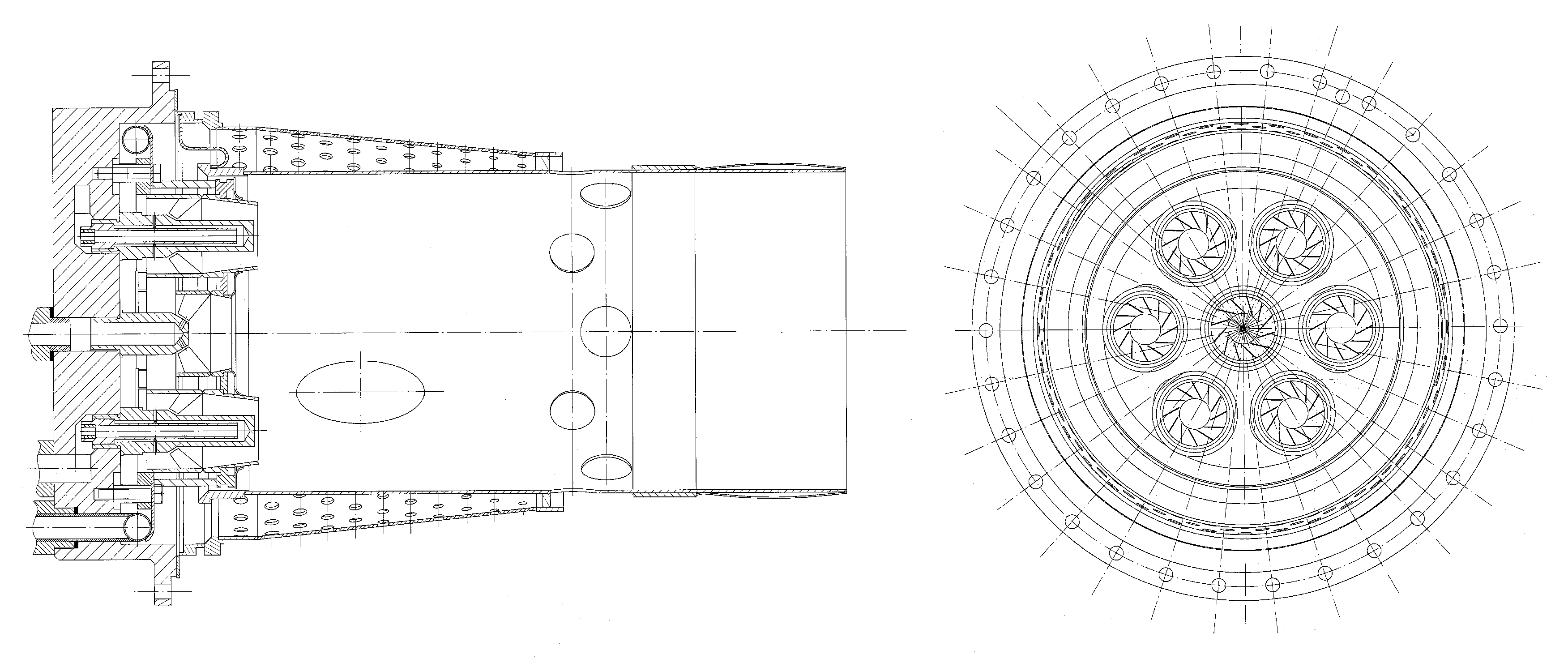
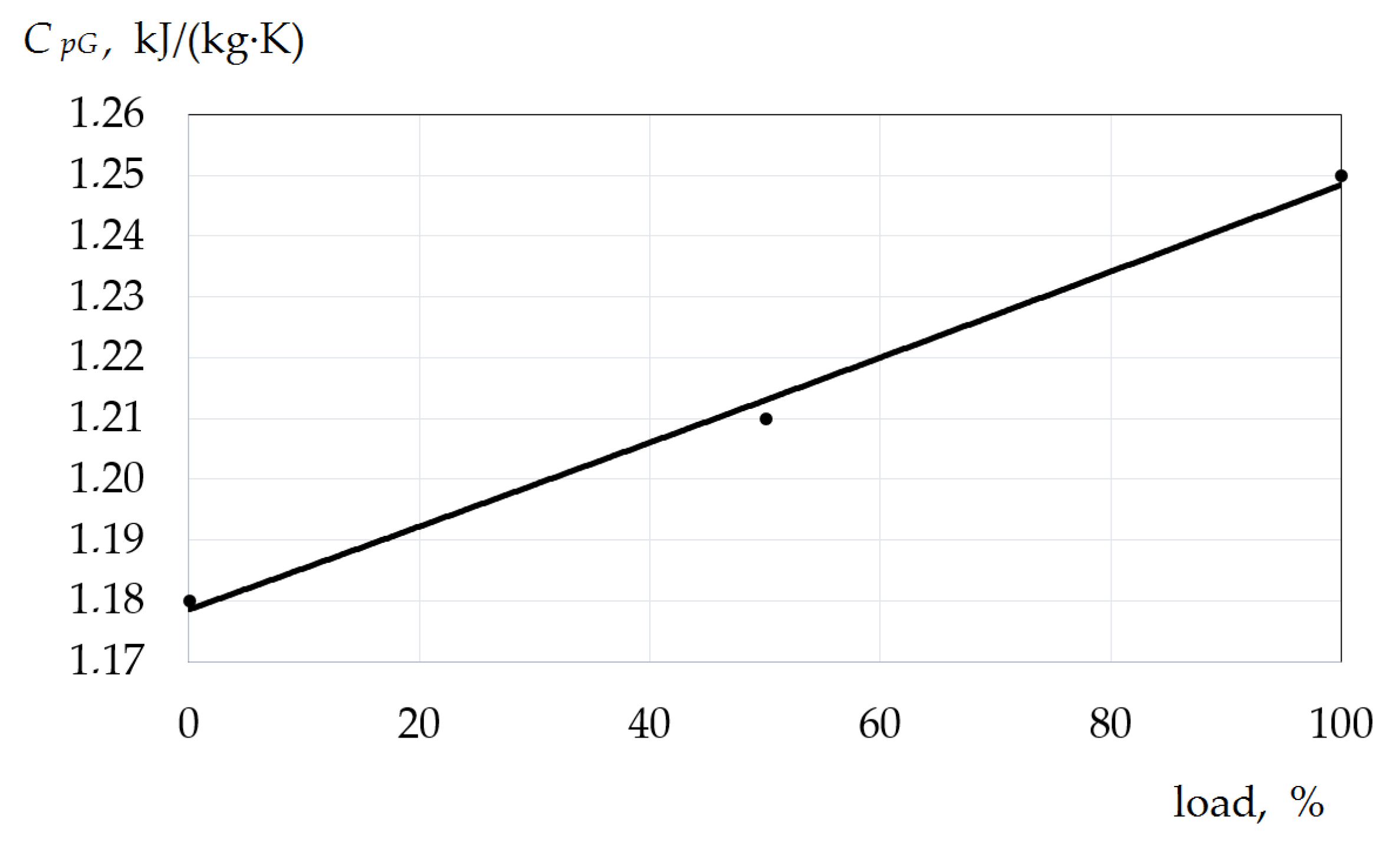






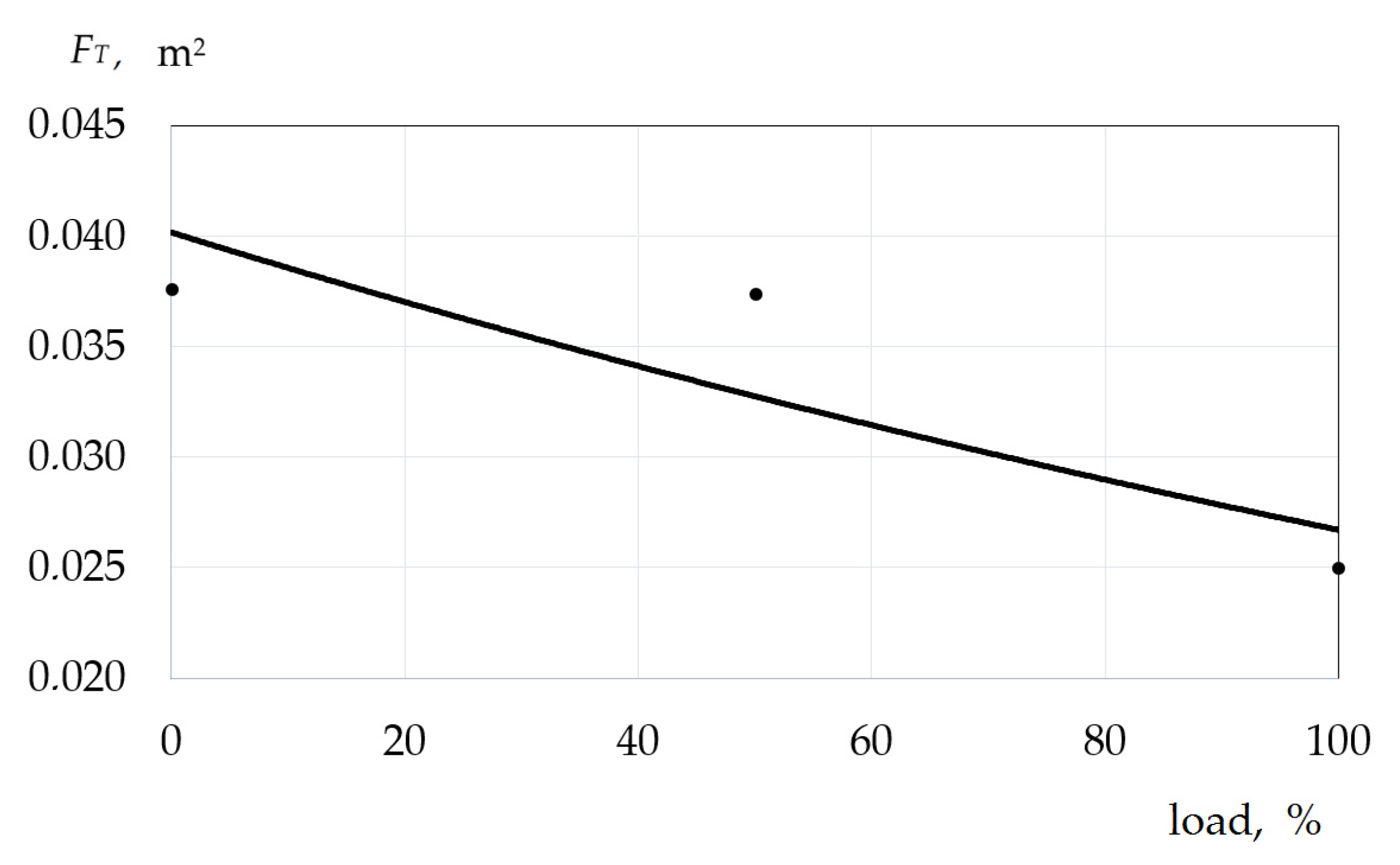
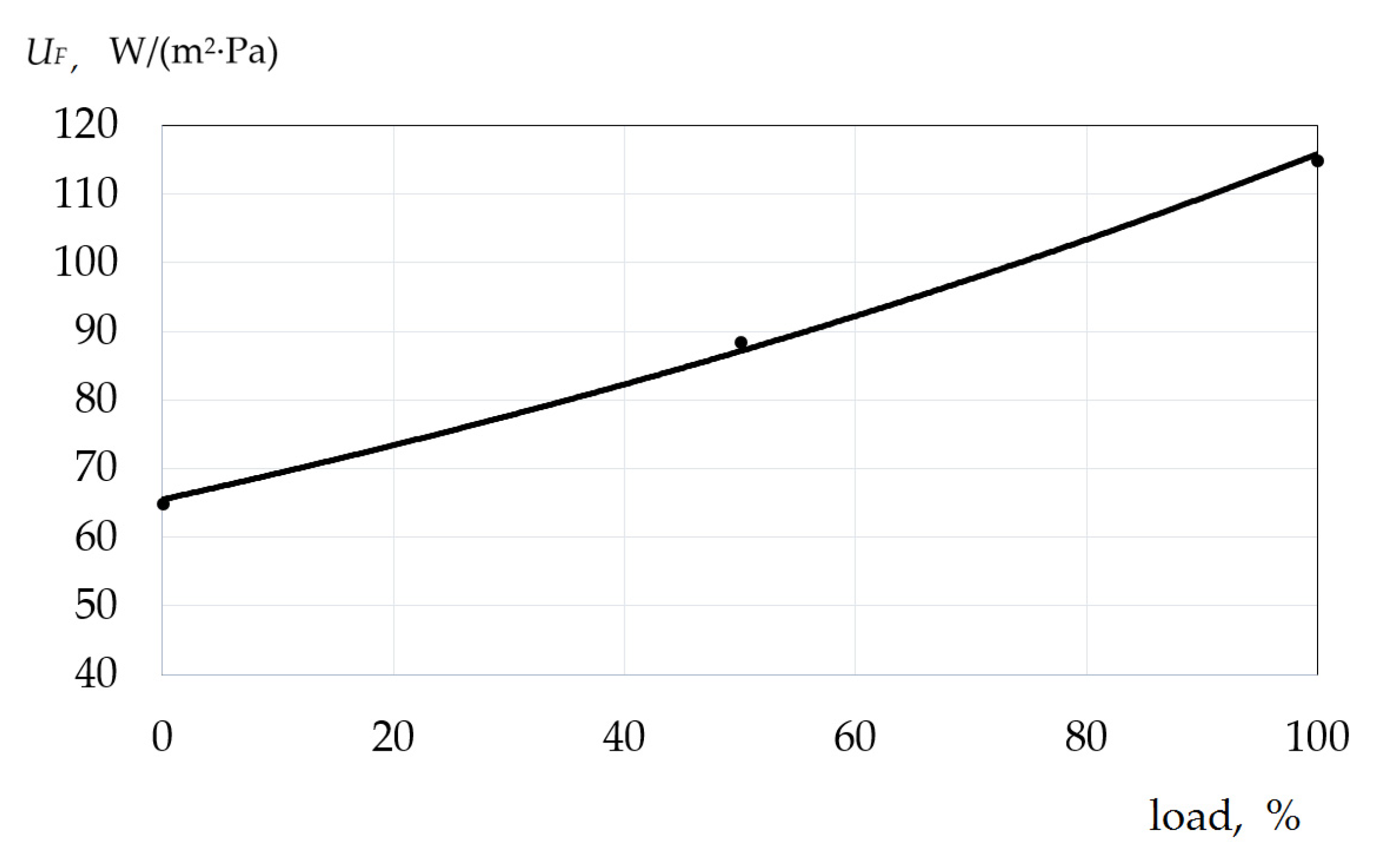
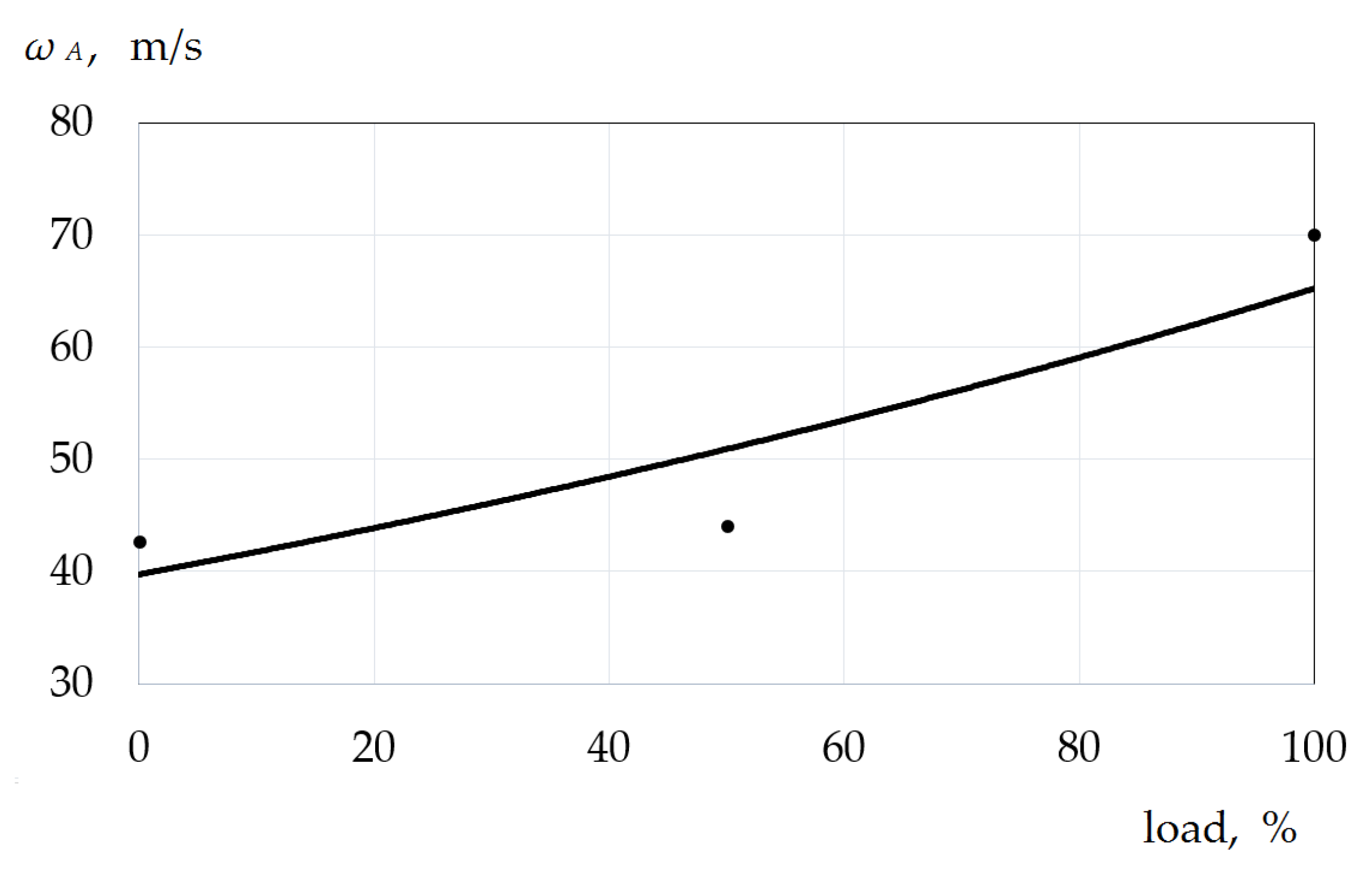
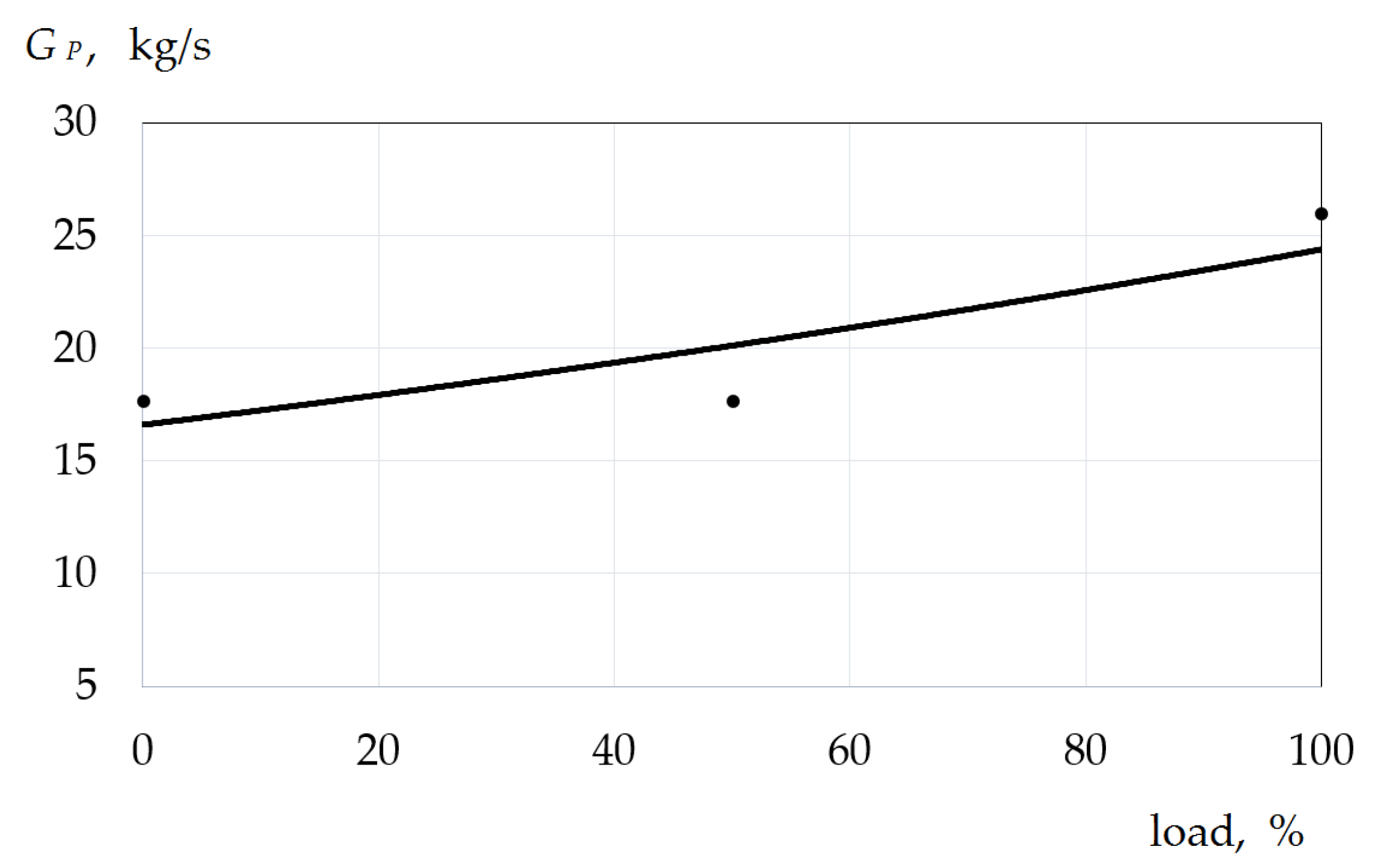
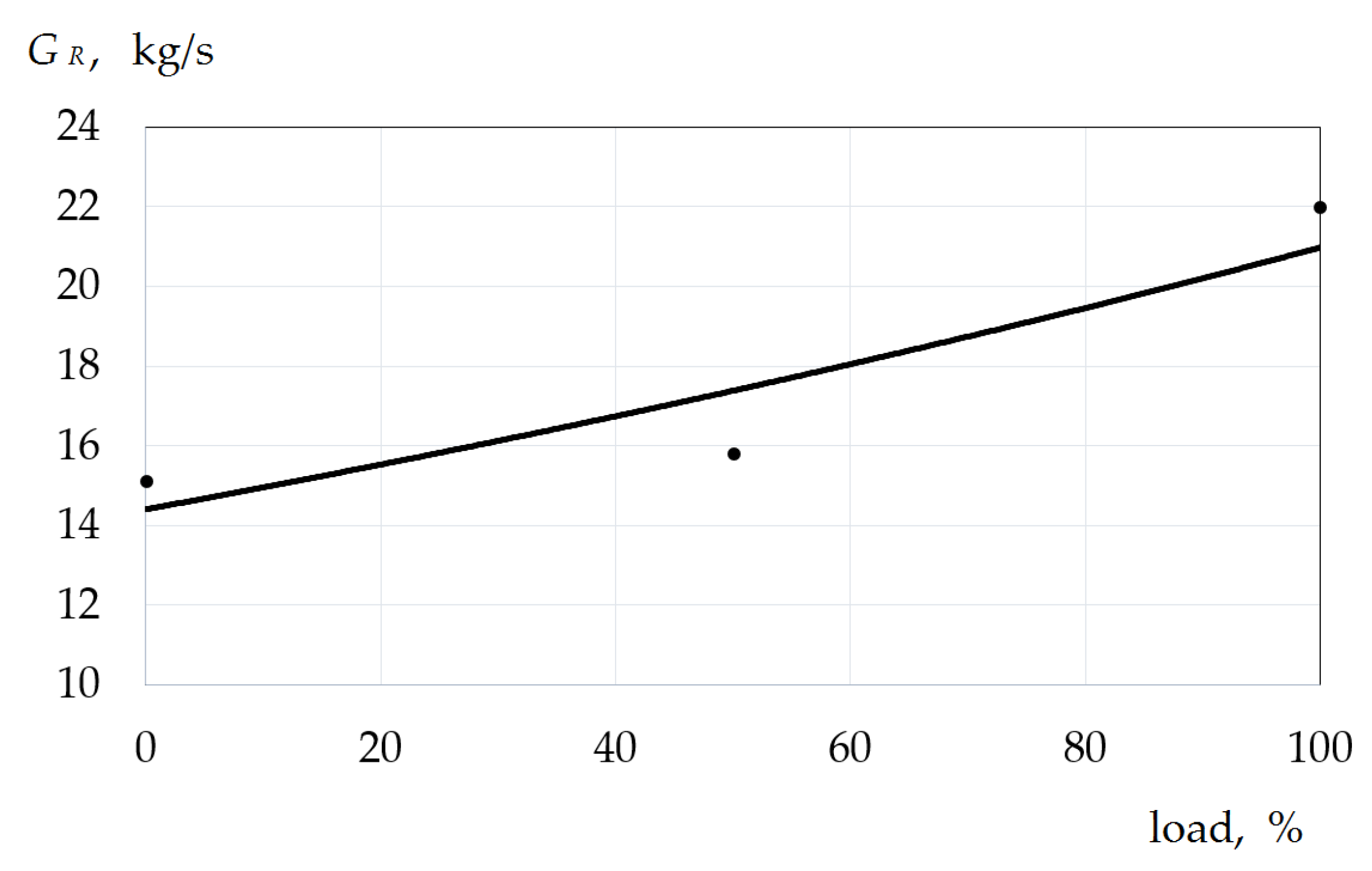


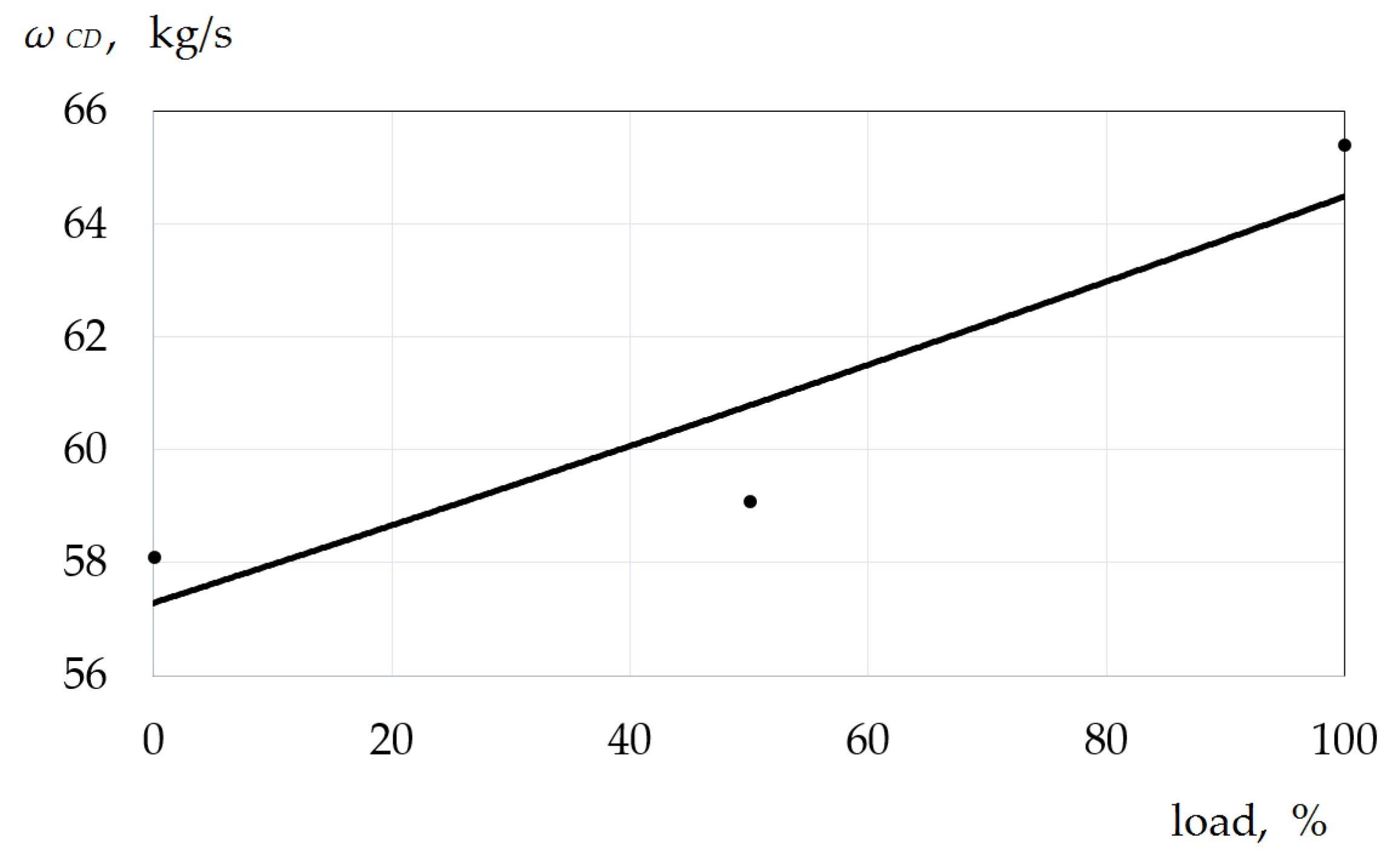
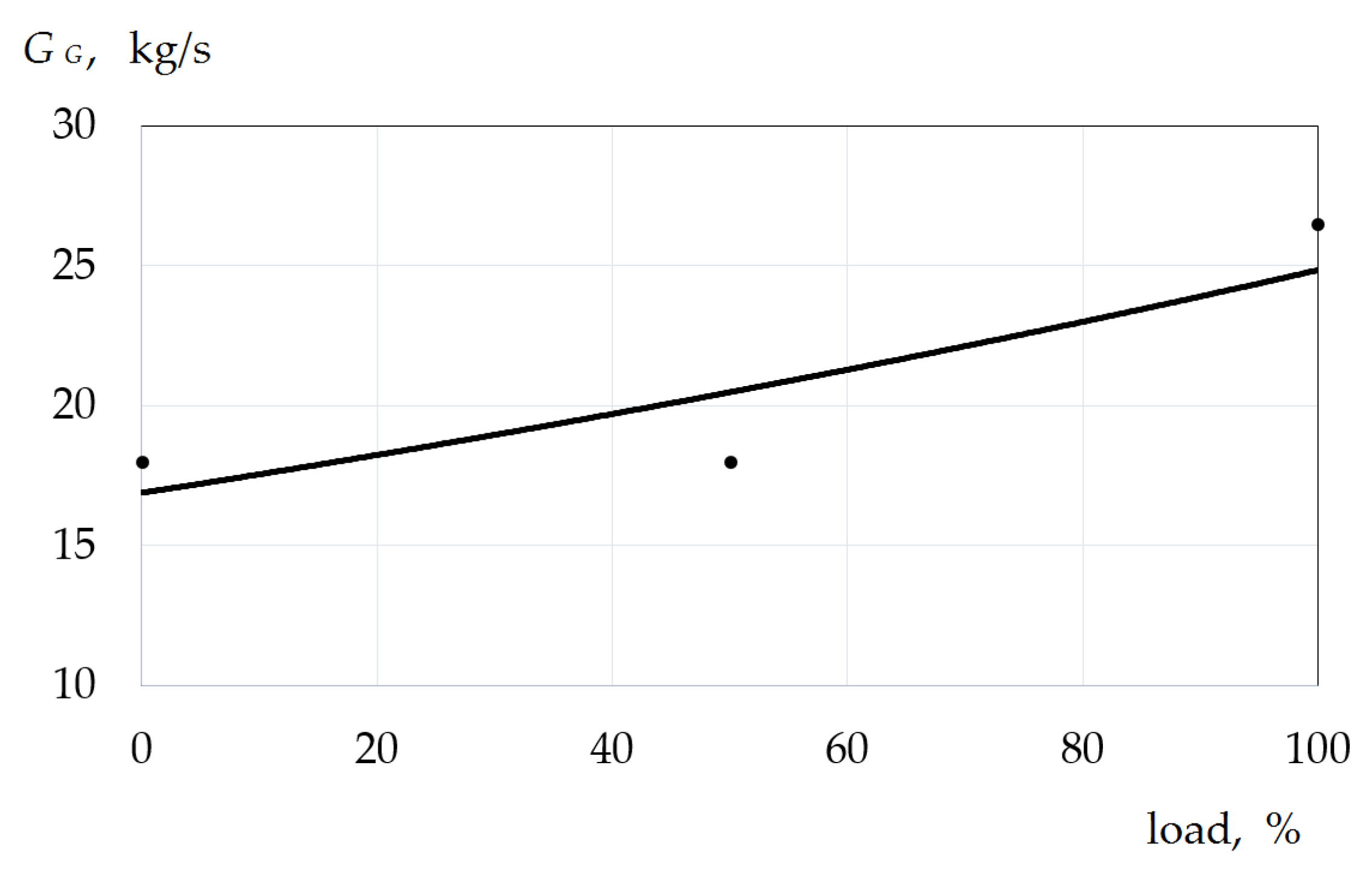
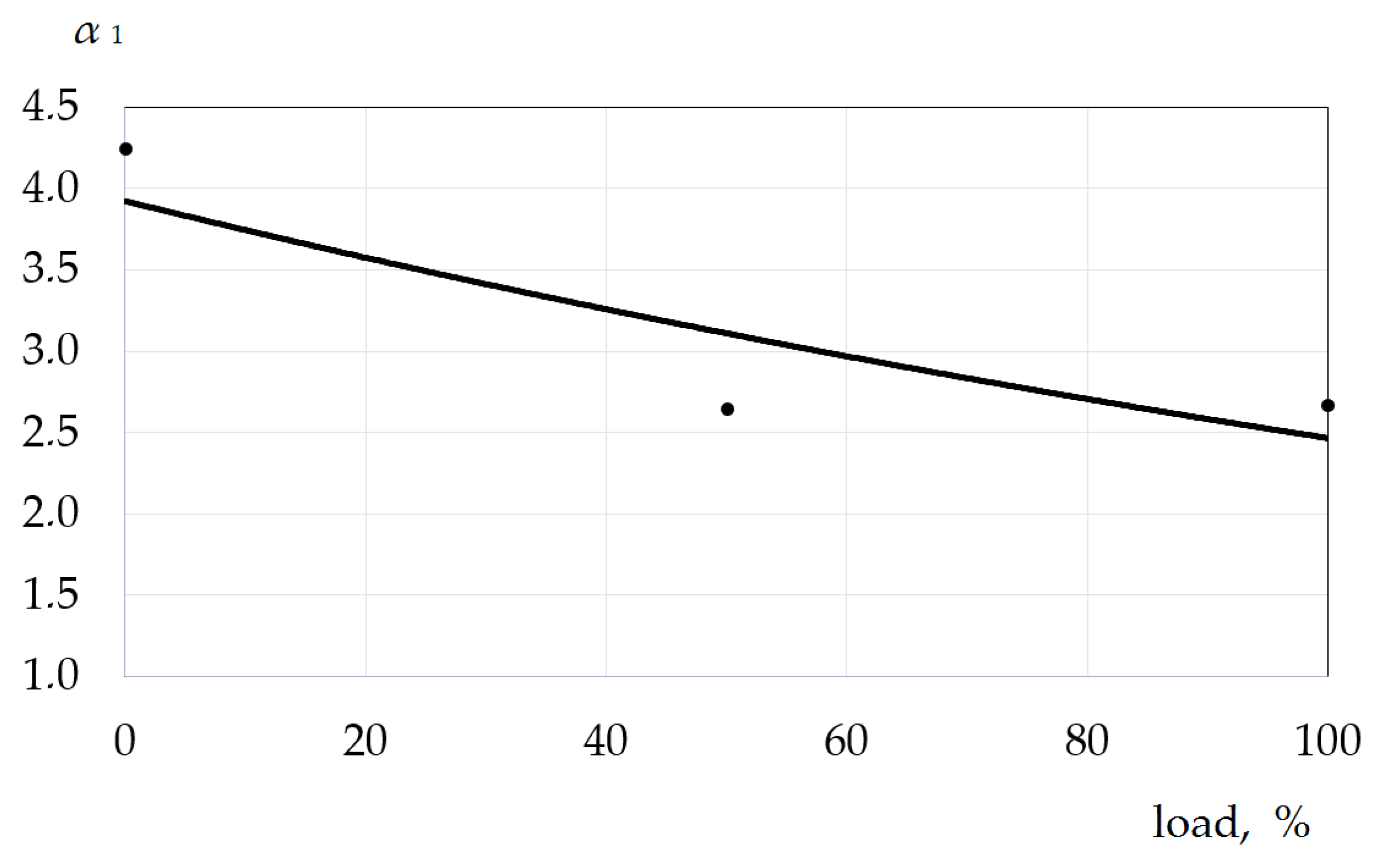

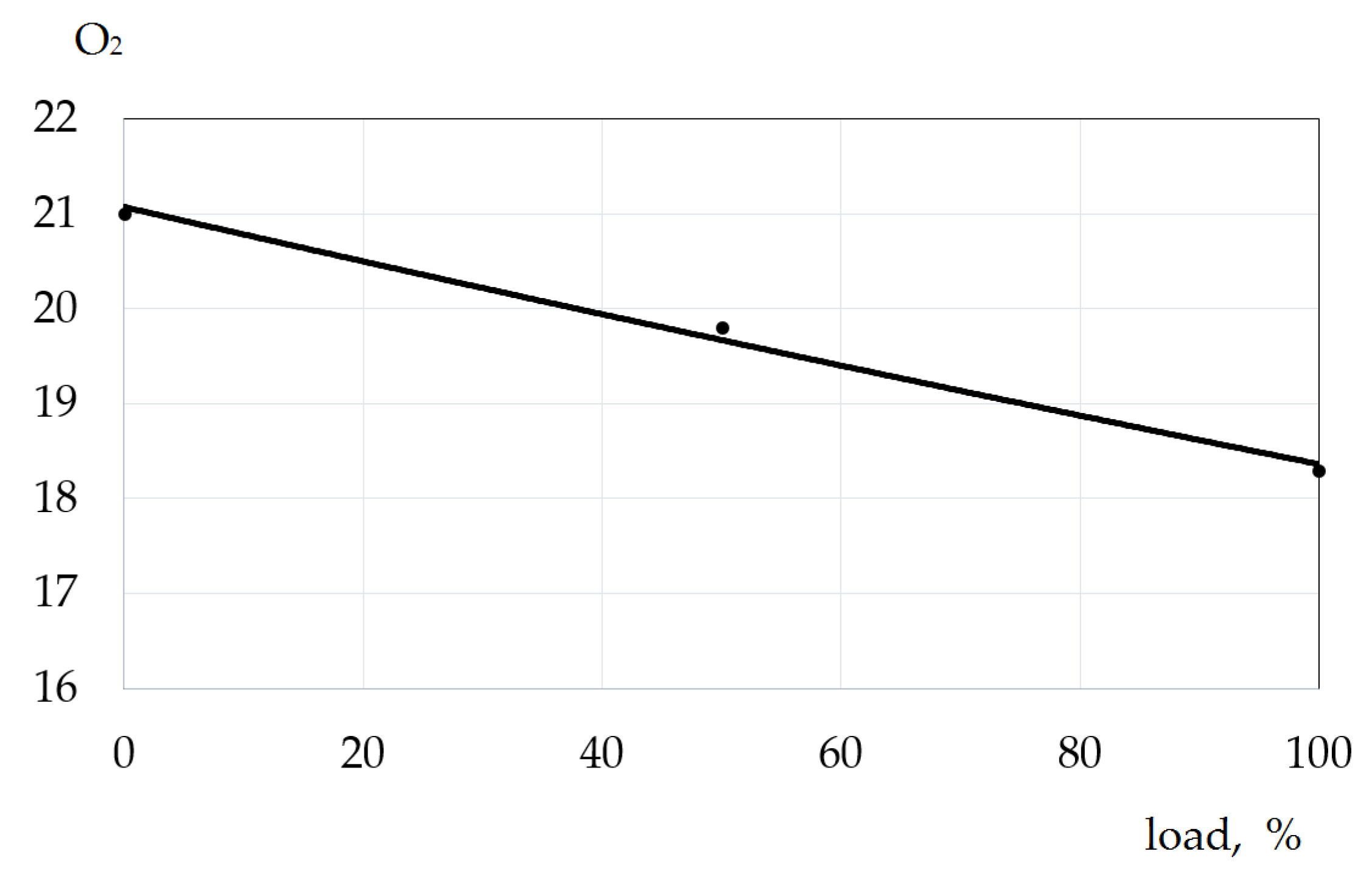
Publisher’s Note: MDPI stays neutral with regard to jurisdictional claims in published maps and institutional affiliations. |
© 2022 by the authors. Licensee MDPI, Basel, Switzerland. This article is an open access article distributed under the terms and conditions of the Creative Commons Attribution (CC BY) license (https://creativecommons.org/licenses/by/4.0/).
Share and Cite
Maspanov, S.; Bogov, I.; Smirnov, A.; Martynenko, S.; Sukhanov, V. Analysis of Gas-Turbine Type GT-009 M Low-Toxic Combustion Chamber with Impact Cooling of the Burner Pipe Based on Combustion of Preliminarily Prepared Depleted Air–Fuel Mixture. Energies 2022, 15, 707. https://doi.org/10.3390/en15030707
Maspanov S, Bogov I, Smirnov A, Martynenko S, Sukhanov V. Analysis of Gas-Turbine Type GT-009 M Low-Toxic Combustion Chamber with Impact Cooling of the Burner Pipe Based on Combustion of Preliminarily Prepared Depleted Air–Fuel Mixture. Energies. 2022; 15(3):707. https://doi.org/10.3390/en15030707
Chicago/Turabian StyleMaspanov, Sergej, Igor Bogov, Alexander Smirnov, Svetlana Martynenko, and Vladimir Sukhanov. 2022. "Analysis of Gas-Turbine Type GT-009 M Low-Toxic Combustion Chamber with Impact Cooling of the Burner Pipe Based on Combustion of Preliminarily Prepared Depleted Air–Fuel Mixture" Energies 15, no. 3: 707. https://doi.org/10.3390/en15030707






